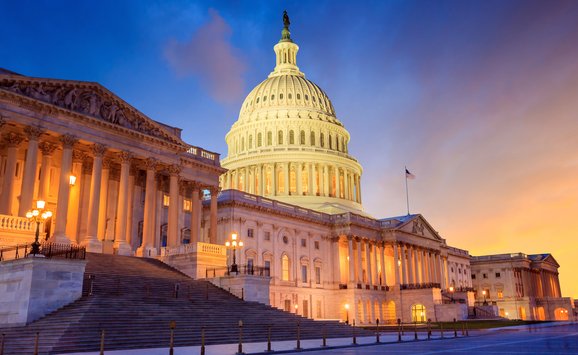If the US Environmental Protection Agency enacts its recent proposal, then the elimination of vehicle subsidies and regulations would affect the vehicles we buy, vehicle prices, manufacturer profits, how much we spend on fuel, and the very air we breathe.
Since the 1970s, the United States has regulated the fuel economy of vehicles in an effort to improve energy security and help consumers reduce fuel spending. In 2012, the US Environmental Protection Agency (EPA) also began to regulate vehicle greenhouse gas emissions, helping reduce pollution from the transportation sector. Then, in July 2025, EPA proposed to rescind the 2009 endangerment finding, which would eliminate the agency’s ability to regulate vehicle greenhouse gas emissions. This proposal adds to the actions the Trump administration and US Congress took earlier this year to stop regulating vehicle pollution—including the elimination of the electric vehicle tax credits and the ability for states to mandate the sale of electric vehicles.
Back in June, we analyzed how a full federal policy reversal (including the elimination of the electric vehicle subsides in the Inflation Reduction Act, the state-level electric vehicle mandates, and the greenhouse gas emissions standards) would affect well-being, prices, and the vehicle market. Importantly, we compared the full suite of policies supporting vehicle decarbonization with a scenario that eliminates all the policies. However, since then, the tax subsidies and the state electric vehicle mandates were reversed, and Congress eliminated noncompliance penalties for the fuel economy standards. These reversals create a very different status quo, where the only policy incentive remaining to reduce emissions from the vehicle sector comes from the vehicle greenhouse gas emissions standards, which are in a tenuous position due to the proposed repeal of the endangerment finding.
Given EPA’s proposal to repeal the endangerment finding, we looked at what would happen if EPA followed through. We found that repealing the standards would cost society $8 billion–$27 billion. This range stands in sharp contrast to EPA’s estimates, which suggest that eliminating the standards would yield annualized benefits of $26 billion–$31 billion, depending on the discount rate.
How Do We Answer This Question?
We used the Resources for the Future Vehicle Market Model to conduct our analysis, modeling a “status quo” scenario that continues the standards set last year under the Biden administration, which reduces emissions rates by about 25 percent between 2026 and 2030. Ideally, we would compare the Biden-era status quo with a single scenario that eliminates the standards, as EPA has proposed. However, due to modeling constraints, we are unable to model outcomes without any standards; instead, we approximate a full repeal by considering what would happen under two weaker versions of the standards.
First, as in our previous analysis, we assume that the standards manufacturers faced in 2026 continue unchanged through 2030 rather than increasing in stringency. Second, we create a stronger reversal, such that manufacturers now face the same standards they faced in 2022, which were about 12 percent weaker than the 2026 standards. The 2022 stringency may better approximate how vehicle manufacturers would behave if standards were eliminated, though assessing that fully is an area for future research.
All of our results capture how manufacturers behave in 2030. This analysis also differs from the previous one in that we incorporate Congress’s repeal of the Inflation Reduction Act electric vehicle subsidies and revocation of California’s authority to set electric vehicle mandates. (“Electric vehicles” refer to all-electric vehicles as well as plug-in hybrids.)

We note three important differences between our input assumptions and EPA’s. First, we use the most recent US Energy Information Administration (EIA) fuel price forecasts, which is consistent with past EPA practice. In contrast, in its analysis of the proposal to eliminate the standards, EPA departed from this tradition, without explanation, by assuming that the Trump administration’s “energy dominance” agenda would reduce gasoline prices to $2 per gallon, which is substantially lower than the price of $2.75 per gallon that EIA forecasts for 2030.
Second, we include the climate benefits of reducing vehicle greenhouse gas emissions. In contrast, EPA assumes that reducing greenhouse gas emissions does not affect public health and well-being, which is inconsistent with the most recent literature review by the National Academies of Sciences, Engineering, and Medicine. Third, we explicitly model changes in consumer well-being (known to economists as “welfare”) when vehicle manufacturers respond to tighter standards by reducing vehicle horsepower or increasing relative prices of gasoline-powered vehicles. EPA makes an unsupported assumption that these manufacturer responses harm consumers sufficiently to overshadow about 79 percent of the fuel cost savings of tighter standards.
Impact of Policy Reversal on Vehicle Sales
The stringency of the standards has important implications for new vehicle sales. Relative to the new status quo—which we also call the “baseline”— freezing the standards at 2026 or 2022 levels leads to a nearly 60 percent reduction in electric vehicle market share in 2030 (Figure 1). (For reference, 2024 electric vehicle sales were about 1.6 million units, or 10 percent of total new vehicle sales.)
Impact of Policy Reversal on Vehicle Prices and Fuel Costs
Vehicle manufacturers comply with the stringent standards in the baseline scenario in part by reducing the relative prices of electric vehicles compared to gasoline vehicles. Weakening the standards to 2026 or 2022 levels raises electric vehicle prices by about $3,700 and reduces gasoline vehicle prices by about $5,000–$7,000 (Figure 2).
Weakening the standards would increase the (sales-weighted) average lifetime fuel costs across all vehicles (Figure 3). Reversing the standards to 2022 levels increases lifetime fuel costs by almost $4,500 per vehicle, as average efficiency of these vehicles decreases from about 43 to 29 miles per gallon. By contrast, using the assumption that gas prices decrease to $2 per gallon—an assumption that lacks clear justification—EPA estimates much smaller changes in fuel costs across scenarios.
Impact of Policy Reversal on Manufacturer Profits
We find that reducing the stringency of the greenhouse gas standards increases profits for manufacturers relative to the baseline scenario, regardless of whether the companies are US-based, foreign, or manufacturing in the United States (Figure 4).
Impact of Policy Reversal on Emissions
Our results also show that reducing the stringency of the greenhouse gas emissions standards would increase greenhouse gas–related damages by 33–50 percent (Figure 5).
Welfare Costs of Eliminating the Standards
These analyses highlight how regulatory rollbacks affect various market outcomes. Economics provides us with a way of collecting these impacts into one aggregate number representing societal well-being.
Our modeling demonstrates that eliminating the standards reduces societal welfare by $8 billion–$27 billion, depending on whether the 2026 or 2022 stringency better approximates how manufacturers will respond to the elimination of the standards. These numbers reflect changes in consumer welfare, manufacturer profits, local air quality, and climate. In stark contrast, EPA estimates that eliminating the standards would yield annualized benefits of $26 billion–$31 billion (depending on the discount rate).
Who Benefits—and Who Doesn’t?
Vehicle regulations shape everyday life in many ways: they influence how much we spend on fuel, the vehicles we buy, vehicle prices, manufacturer profits, and the air we breathe. So, even the most nuanced regulatory changes will have major effects. Overall, we find that rolling back the greenhouse gas standards is a net cost to society, to the tune of $8 billion–$27 billion.
Though eliminating the emissions standards makes gasoline vehicles cheaper to purchase, lower fuel efficiency makes them more expensive to drive. Elimination of the standards also would increase greenhouse gas emissions, increasing the costs—and the resulting damages—of climate change. Notably, eliminating these regulations would sharply reduce the market for electric vehicles, as manufacturers would no longer be required to make these vehicles affordable for most Americans.
While eliminating the vehicle greenhouse gas emissions standards would benefit vehicle manufacturers over the time frame we studied, the combination of deregulatory actions would reduce consumer welfare and increase environmental damages. Ours is a much different conclusion than emerges from the EPA analysis, which relies on unsupported assumptions regarding gasoline prices, consumer behavior, and climate effects.








